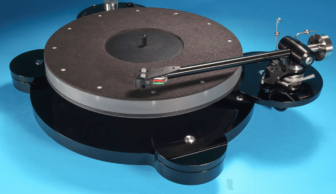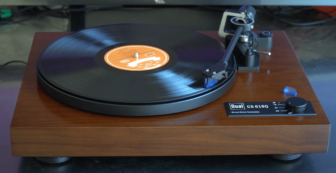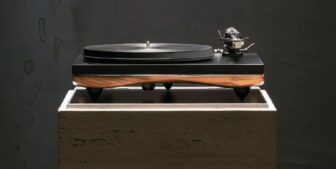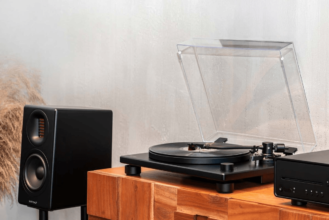Burmester 217 Review
It’s been 30 years since Burmester introduced the world’s first belt-driven CD player, and only now are they unveiling their second turntable. This new model is a masterpiece of precise engineering and offers a fascinating lesson in top-quality LP playback.
by Stefan Schickedanz
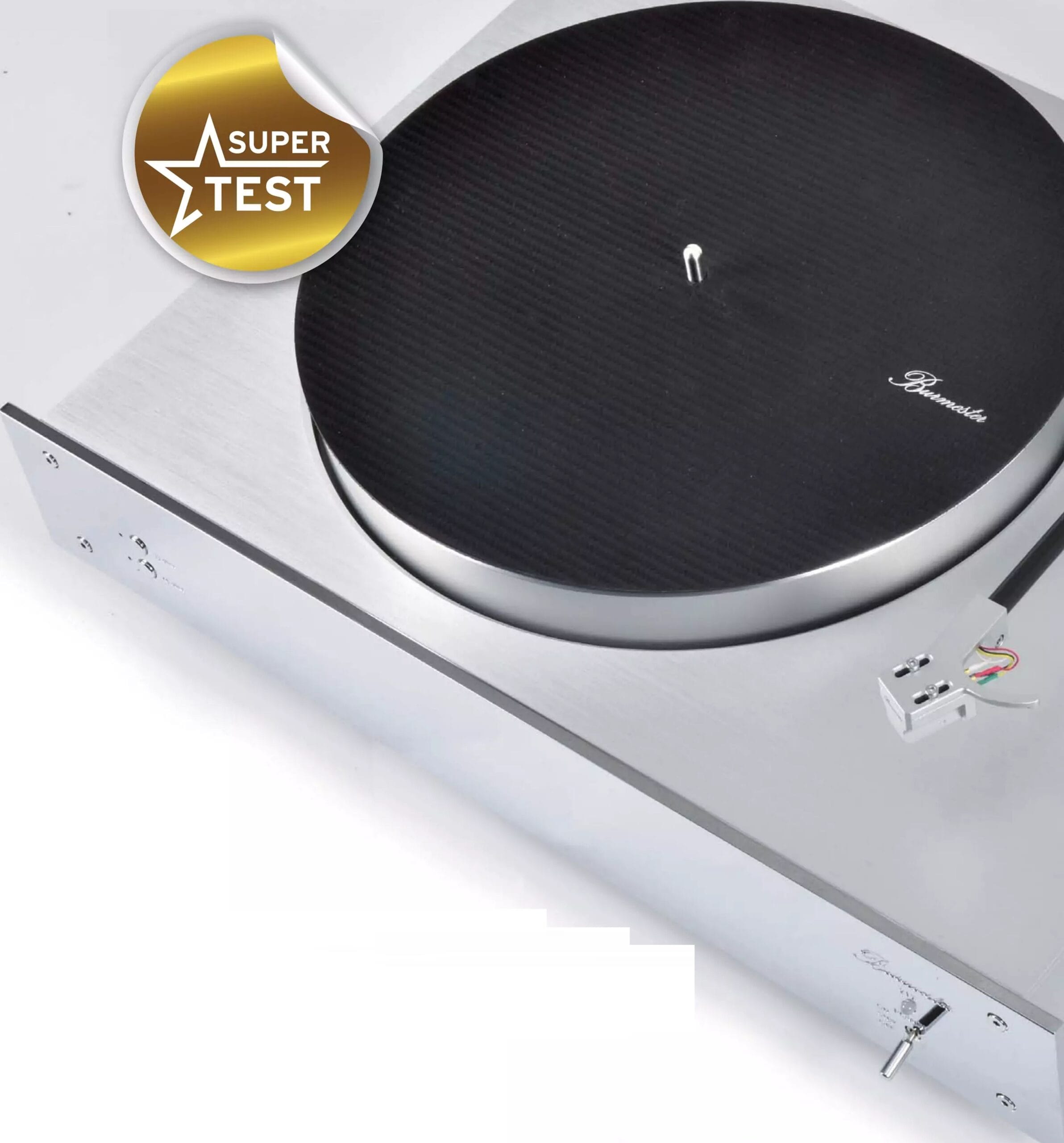
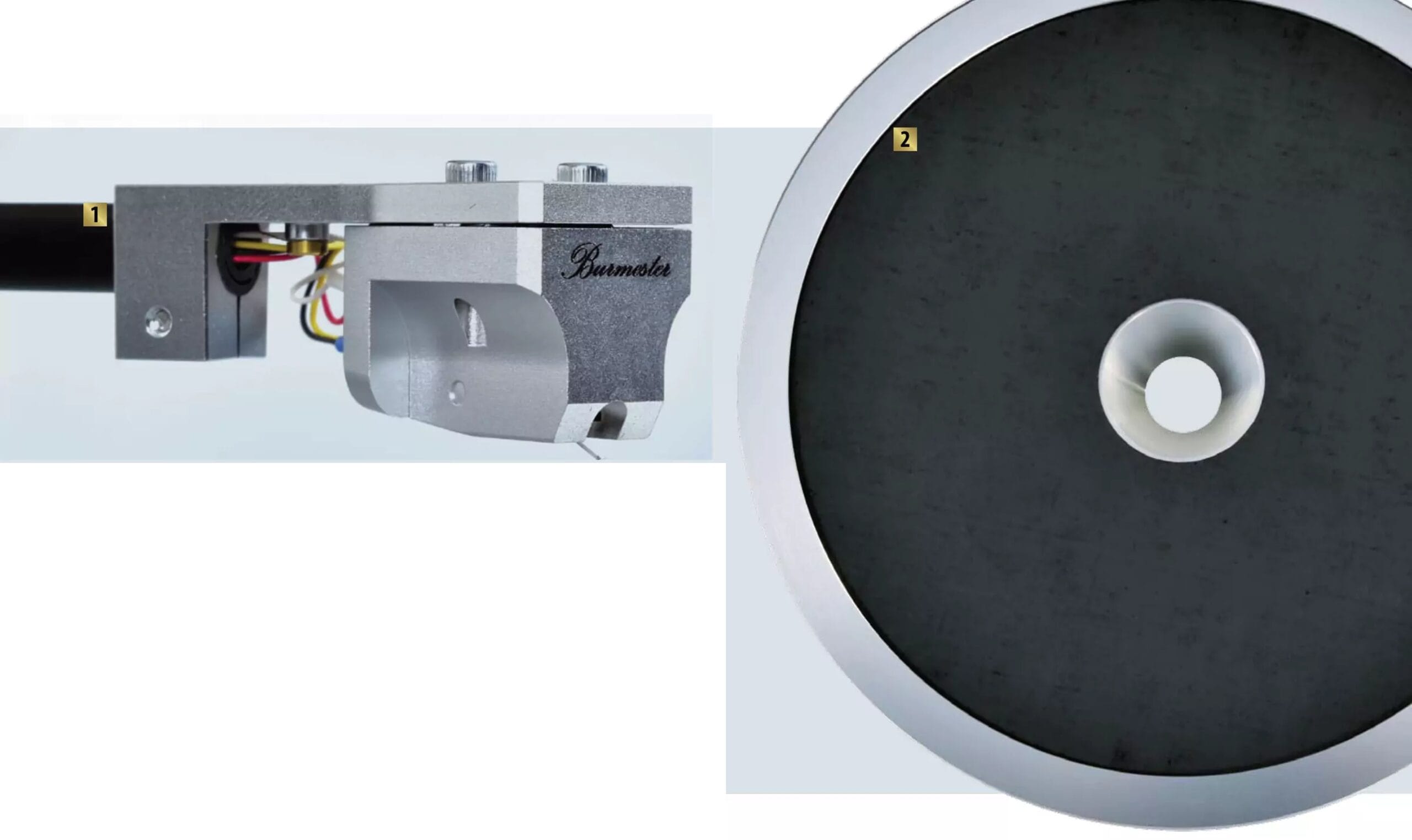
1/ The MC cartridge, included with the 217, uses a sapphire cantilever that connects to the Shibata diamond without any glue or solder.
2/ The aluminum platter is both massive and heavy, sitting gently on the sub-platter thanks to a conical recess.
When you assemble it, you immediately notice its calm, precise design. The front is high-gloss chrome, the main body is brushed aluminum, and the platter itself has a satin finish. Every part has a purpose, and each detail matches what you’d expect from Burmester.
They use multiple motors and belts so that any small flaws or rotation deviations can’t pass through to the platter or the record.
Rotational Momentum
The 217 runs with two high-end motors. By splitting the load, even minuscule variations in force and speed are balanced out. They also tackle small imperfections in the rubber belts in a clever way: two belts work at different heights on the fairly heavy aluminum sub-platter, with more tension than usual. This creates a tight transfer of power. In the end, it all helps the platter maintain a steady rotation, with larger sections of belt each pulling or being pulled in turn.
Inside, the sub-platter rests on a special bearing that uses a small ball on a polished spindle. In addition to very hard coatings like DLC (Diamond Like Coating), which is often used on watch cases, this bearing also has a self-lubricating design to reduce friction and wear.
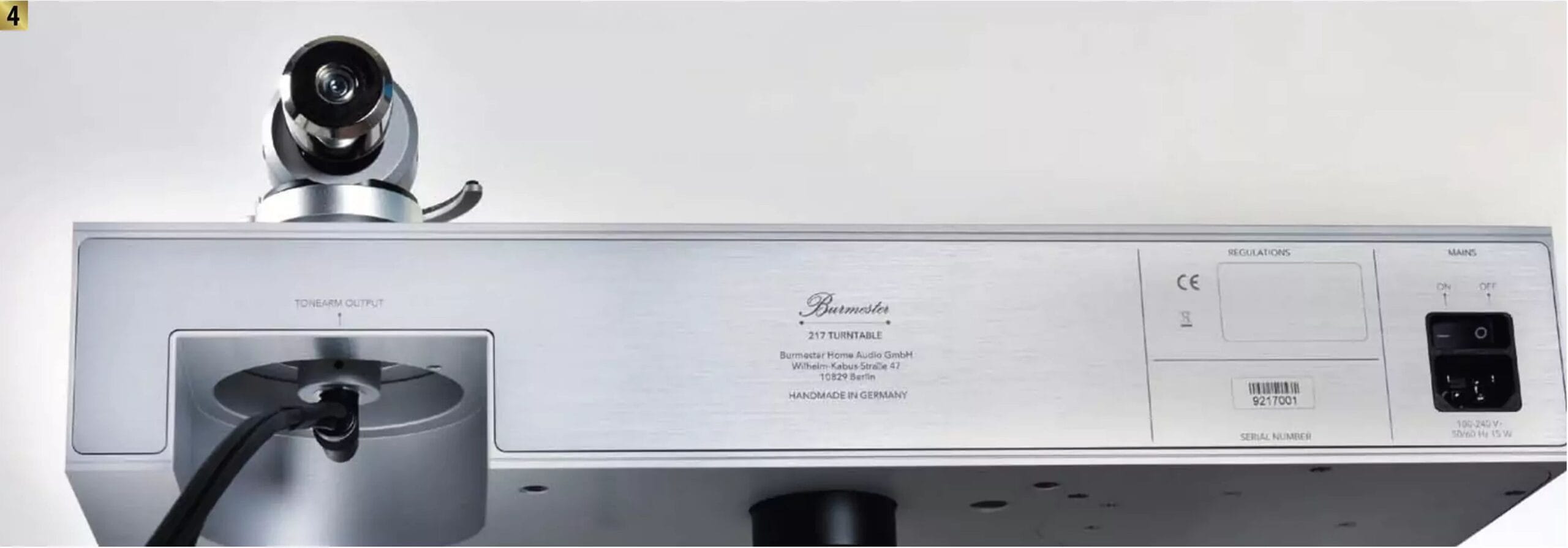
4/ There’s a cutout at the back so you can plug in the symmetrical multipole cable without hassle.
Dieter Burmester left behind an impressive legacy in hi-fi, recognized even by his toughest competitors. The family business, which continues to thrive after his untimely passing, offers everything from speakers to amplifiers. One milestone that doesn’t get discussed much these days is the belt-driven CD player. Instead of driving a CD directly, Burmester used a belt to separate the disc from quick-acting motor vibrations—an innovative concept at the time. Although they collaborated with Far Eastern experts to pull it off, the end result was still remarkable.
Burmester once said that designing a turntable to match the same high standard might never become a reality. Even so, he left sketches and instructions for such a product. His heirs took up the challenge to turn those ideas into a top-notch analog statement, integrating modern knowledge of analog playback along the way.
An Expensive Passion
Their first analog turntable launched in 2017, a mechanical marvel in its own right. Its high price and the permanently active phono preamp left some room for improvement, though. Now, the Burmester 217 costs about $21,300, which is still quite expensive. However, other brands charge similarly for a fully engineered all-aluminum turntable. Burmester’s product numbers correspond to the month and year of their launch, which is why we got to see and hear this special piece so soon. Once again, you see the same sleek design: a shining chrome front, brushed aluminum frame, and a satin-finished platter. Nothing feels out of place, and each part captures Burmester’s meticulous craftsmanship.
To avoid letting any mechanical vibrations or speed fluctuations reach the record, they opted for multiple motors and belts.
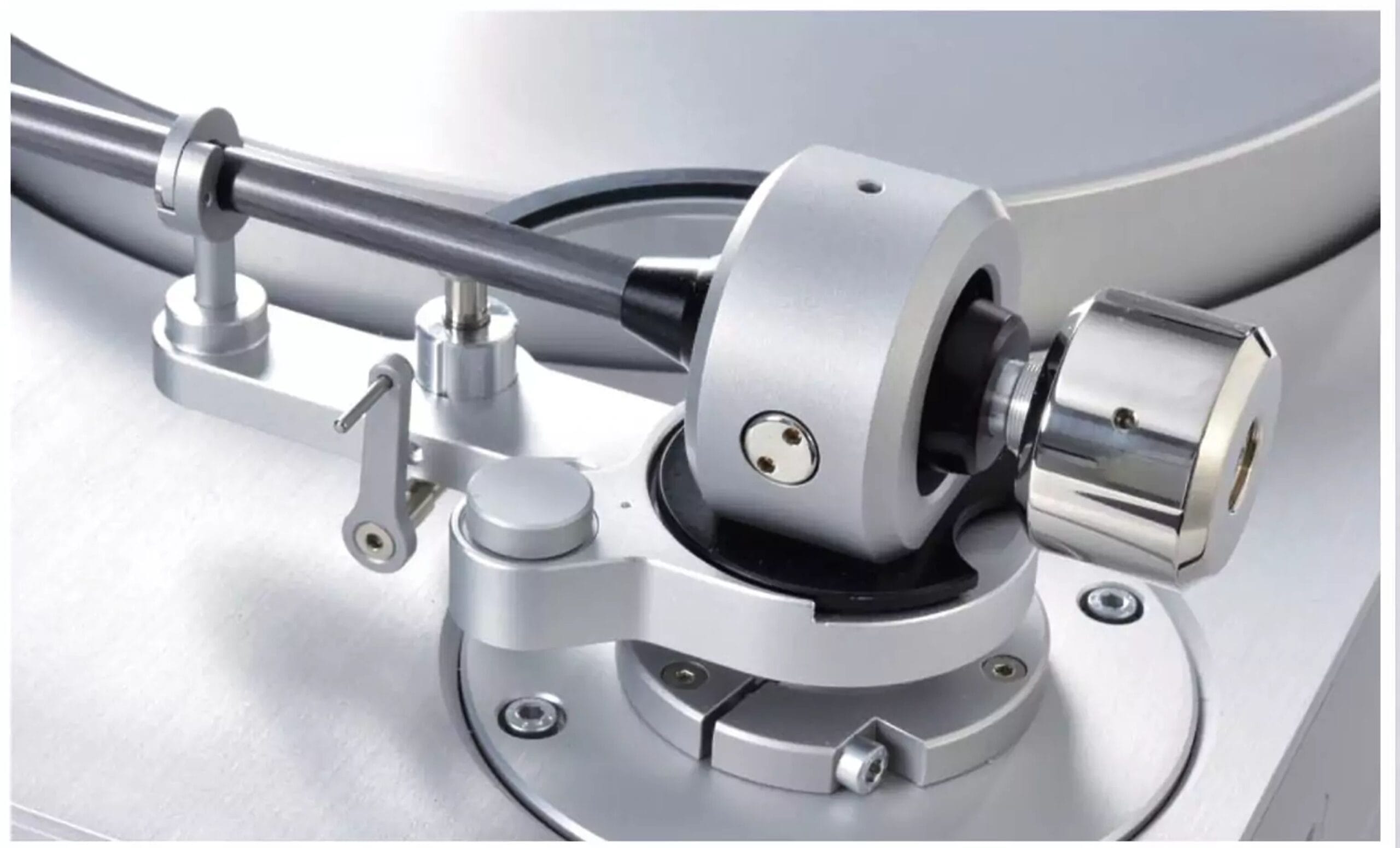
The pre-installed tonearm also features an intricate, play-free mounting system, showing that Burmester didn’t choose any standard solutions when developing this new analog flagship.
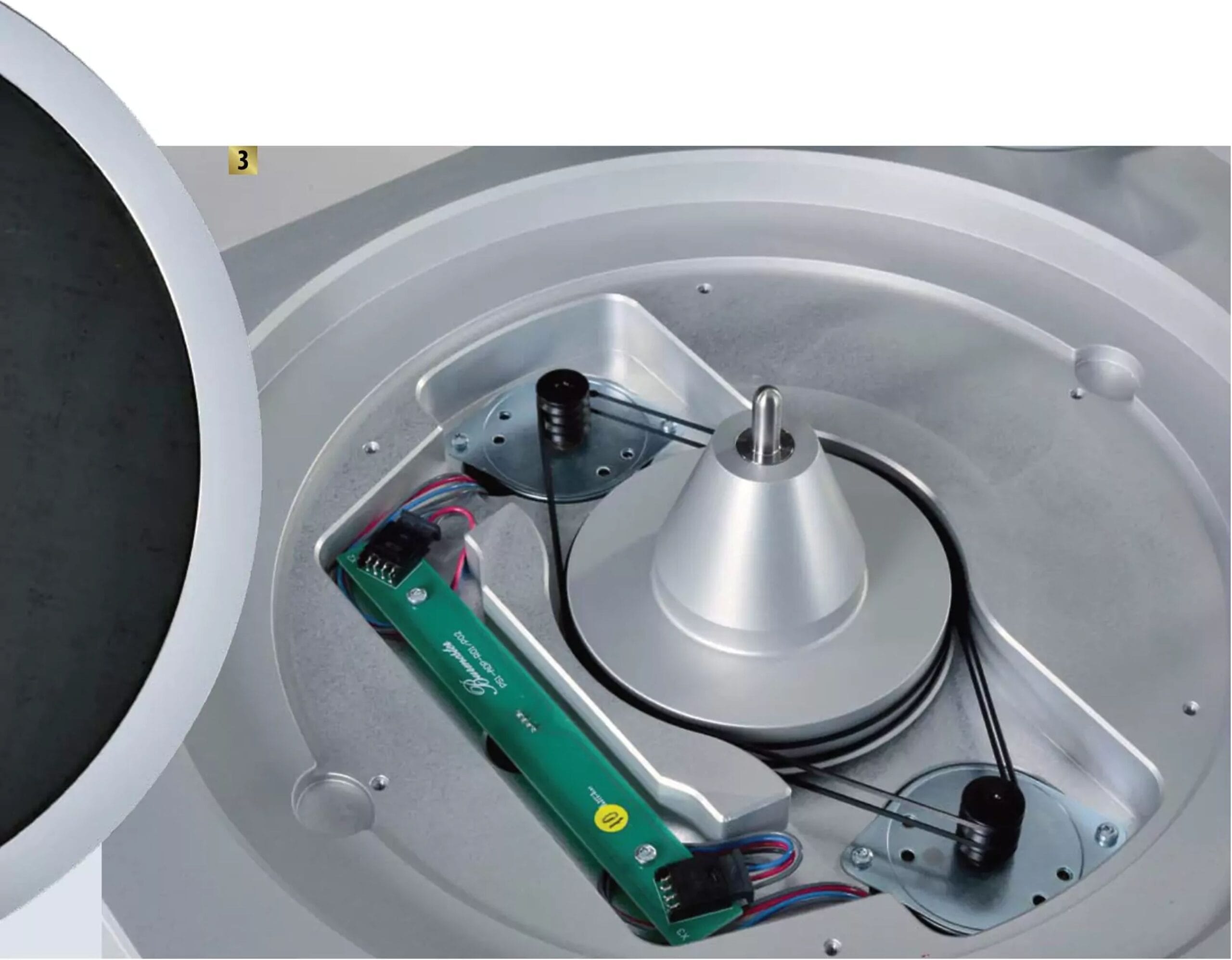
3/ The Burmester turntable uses two motors and a double-belt drive that act on a small sub-platter.
At a glance, the main platter looks like a single solid aluminum piece, but it’s actually more sophisticated. Along with a dozen copper inserts to distribute mass evenly, there’s also a layer of bitumen underneath for damping. This helps manage the tricky acoustic properties of aluminum.
The biggest highlight is how the sub-platter connects to the main platter. They don’t just fit together casually; instead, there’s a tapered mount on the sub-platter and a matching recess in the main platter. This guarantees a snug fit and a perfect transfer of weight and torque. This design is common in industrial applications that demand reliable power transmission. If you watch the platter spin with a magnifying glass, you’ll see how extraordinarily stable it is.
For the tonearm assembly, Burmester avoided going all-in on mass-heavy parts. Still, there’s plenty of aluminum in the arm base and the gimbal pivot. The development team says the real innovation is in the bearings, which differ from standard ball bearings. These special bearings nearly eliminate static friction.
In other words, the arm experiences almost the same friction when it’s moving as when it’s just starting to move. The arm doesn’t shift much while tracing a groove, but any uneven drag could push against the stylus and add subtle distortions.
Arm and Wealth
The arm tube is made of an aluminum-carbon composite for stiffness and good damping of resonances. At the front is an aluminum headshell that matches Burmester’s factory-installed cartridge perfectly. The cantilever is sapphire, directly pressed into the fine Shibata diamond.
On the underside of the tonearm base is a multipin connector, making setup easy. Burmester includes a balanced XLR cable, offering potential benefits for grounding and keeping noise out of the signal. Of course, you’ll need a suitable phono preamp that supports this connection.
Specs
Dimensions (W×H×D): 48.2 × 16.5 × 28.3 cm
Weight: 31.5 kg
Measurement Charts
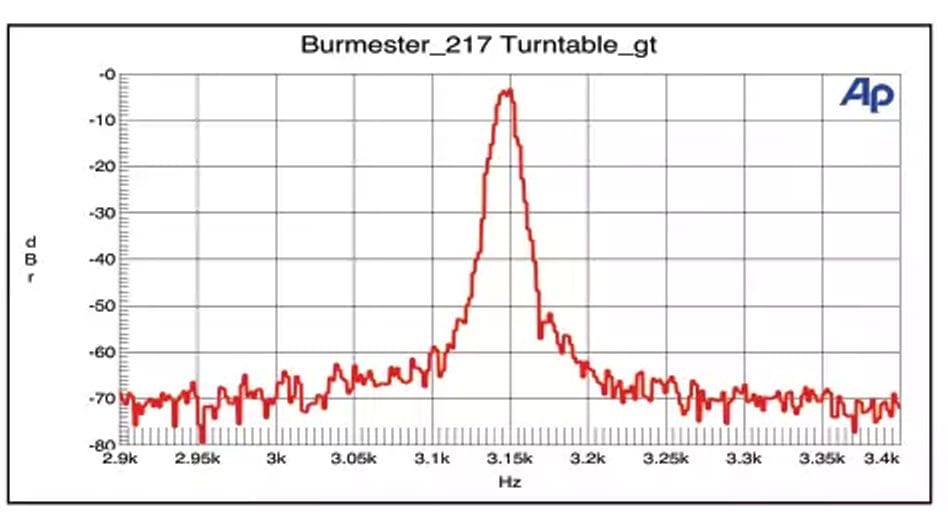
Speed Deviation Spectrum
A narrow peak that only broadens significantly at lower levels
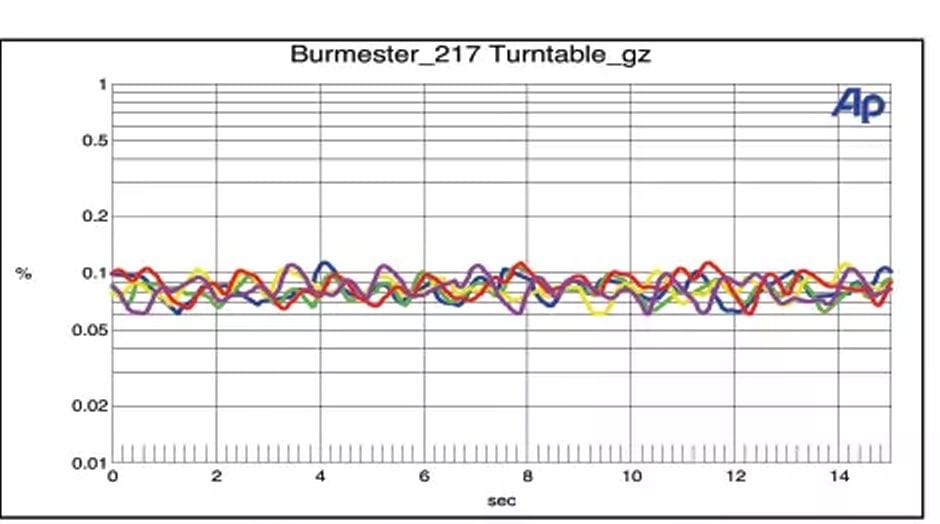
Speed Variations vs. Time
Very stable rotation, with no clear pattern of fluctuation or big spikes

Rumble Spectrum
Outstanding rumble measurements above 20 Hz, with no interference
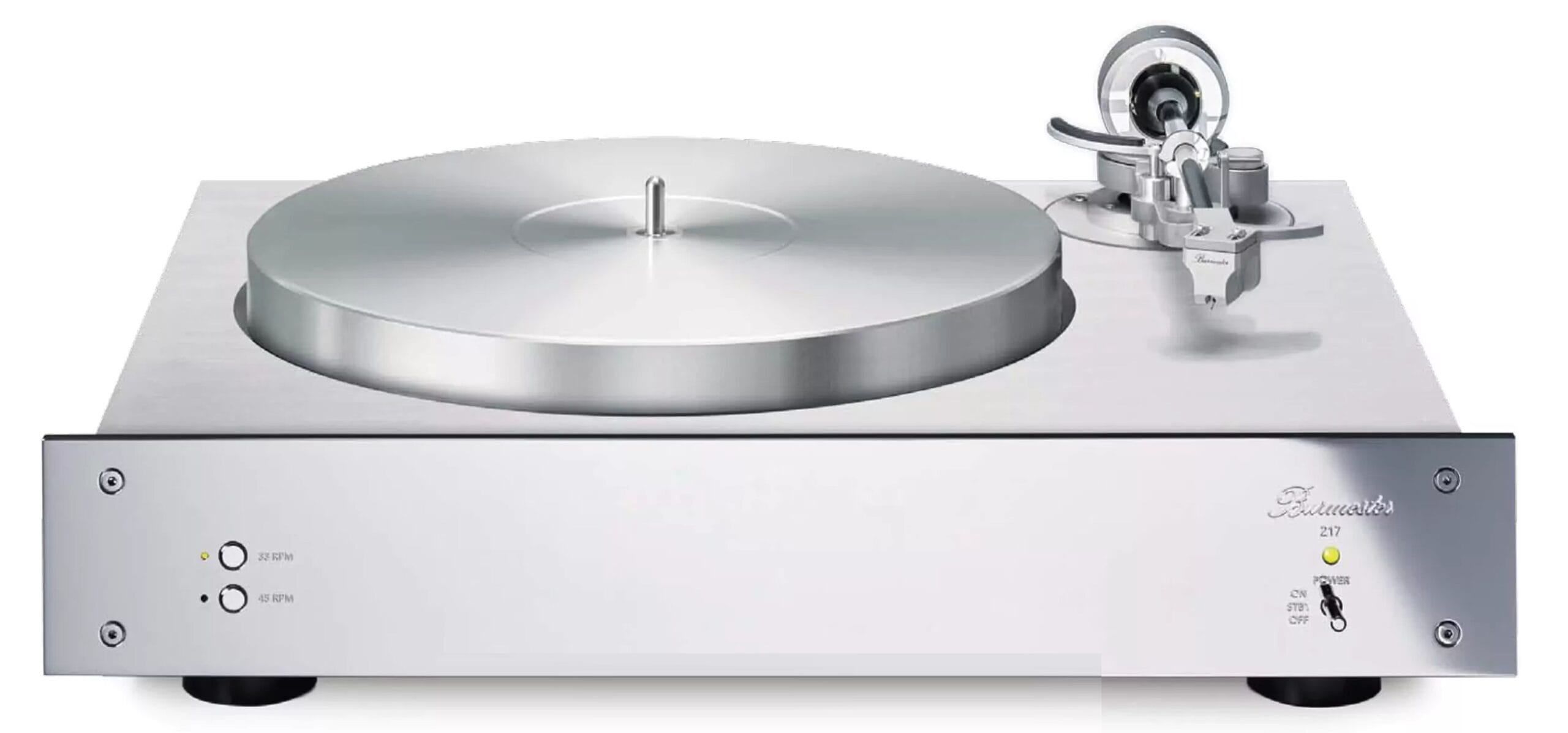
Visually understated yet undeniably elegant, the 217 translates Burmester’s familiar electronics styling into a high-end turntable.
Picking the right phono preamp was the only tricky part for the stereoplay team. With unbalanced cabling, the cartridge can be picky and may not mesh perfectly with every phono stage. But once you find a good match, the 217 opens up a whole new analog dimension. It doesn’t stand out wildly from other top-class turntables, but playing Steely Dan’s “Babylon Sisters” gave us a fresh sense of clarity. The ultra-dry rhythms and almost hyper-accurate drum hits still carried a sense of refinement and sweetness, revealing details we’d never noticed in this simple 80s pressing. The result was a sound that was simultaneously energetic, lush, and slightly more refined and silky than expected.

Burmester 175: Every Beginning Is Hard
Lothar Brandt’s “Big Block” review in AUDIO magazine (October 2019) covered Burmester’s first turntable—a beast with four motors and an external power supply. Weighing more than 60 kg, the 175 was priced at around $34,300, or about 25 ounces of gold at the time. That was steep, even for some dedicated Burmester fans. Because its integrated phono stage couldn’t be turned off or modified, not everyone was happy. The new 217 addresses these concerns.
From Peter Gabriel’s “San Jacinto” to Kate Bush’s “Breathing,” the 217 amazed us by sounding swift yet not harsh, dynamic but never grating. It adds just a hint of softness to normally hard-edged frequencies, preventing any dullness or overly smooth coloration. It reproduced tracks like “Peter Gunn” from Art of Noise with ample, agile bass, all while staying true to those classic electronic textures.
Heading to 1812 with the 217
At hi-fi shows, classical demonstrations often focus on startling effects rather than the music itself. That’s a shame for such a capable turntable. Listening to Tchaikovsky’s “1812” by Erich Kunzel from the very first note, we realized there’s incredible depth in the building tension, the depiction of armies, and the subtle violin lines we’d previously overlooked.
It took three decades for Dieter Burmester’s belt-driven CD player to be outdone by a turntable. The 217 is the one to do it, delivering the beauty of analog to fans of dynamic, punchy pop as well. It’s an outstanding performer.
Practice and Compatibility
Amplifier Compatibility Diagram
Higher voltage requirements, but still relatively easy to drive because of a forgiving impedance
- Voltage: up to 18 V
- Impedance Range: 4.0 – 17.0 Ω
- Current Demand: 4.0 A
Room Acoustics and Placement
Try aiming it roughly at the listener, and experiment with how close it is to the wall
- Listening Distance: 1 m to 5 m
- Wall Distance: 0 m to 1.5 m
- Reverberation Time: 0.2 s to 0.8 s
Rating
- Naturalness: 10/10
- Fine Resolution: 9/10
- Peak Dynamics: 7/10
- Bass Quality: 7/10
- Imaging: ~8/10
“At this price, it’s a well-finished and well-equipped beginner’s speaker. The overall sound is smooth, detailed, and colorful, but with limited deep bass. Its midrange is nicely understated, which helps speech clarity. It also makes a solid rear speaker. The measurements are good.”
- Measurements: 6/10
- Practicality: 6/10
- Build Quality: 7/10
Test Verdict
- Sound: Top Class (44 points)
- Overall Score: 63 points
- Price/Performance: Very Good
Burmester 217 Turntable
The 217 is Burmester's first turntable introduced to its renowned Top Line series. The 217 prioritizes optimal playback quality ...



